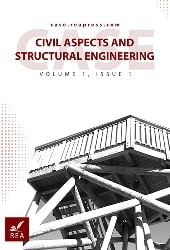Identifying New Human Resource Management Strategies and Presenting a Localization Model for Contractors in the Western Municipality of Mazandaran Province
Abstract
This study aimed to identify new human resource management strategies and present a localization model for municipal contractors in western Mazandaran. Using a mixed-method approach, key components were identified through literature review, expert interviews, and the Delphi technique. Data were analyzed using PLS software and statistical tests. The results highlight essential dimensions such as increased freedom and responsibility, improved supervision, budget allocation, problem-solving, foresight, and expert workforce development. Experts confirmed the model's suitability, though its implementation requires prerequisites like training, attitude change, and legal reform.
Keywords:
New human management strategies, Localization model, Municipal contractorsReferences
- [1] Okay-Somerville, B., & Scholarios, D. (2019). A multilevel examination of skills-oriented human resource management and perceived skill utilization during recession: Implications for the well-being of all workers. Human resource management, 58(2), 139–154. https://doi.org/10.1002/hrm.21941
- [2] Batty, C., & Taylor, S. (2021). Script development: Critical approaches, creative practices, international perspectives. Springer Nature.
- [3] McClean, E., & Collins, C. J. (2019). Expanding the concept of fit in strategic human resource management: An examination of the relationship between human resource practices and charismatic leadership on organizational outcomes. Human resource management, 58(2), 187–202. https://doi.org/10.1002/hrm.21945
- [4] Siew, R. Y. J. (2014). Human resource management in the construction industry-sustainability competencies. Australasian journal of construction economics and building, the, 14(2), 87–103. http://dx.doi.org/10.5130/ajceb.v14i2.3957
- [5] Florez, L., Castro-Lacouture, D., & Medaglia, A. L. (2013). Sustainable workforce scheduling in construction program management. Journal of the operational research society, 64(8), 1169–1181. http://dx.doi.org/10.5130/ajceb.v14i2.3957
- [6] Al-Dhaafri, H. S., Yusoff, R. Z., & Al-Swidi, A. K. (2013). The effect of total quality management, enterprise resource planning and the entrepreneurial orientation on the organizational performance: The mediating role of the organizational excellence---A proposed research framework. International journal of business administration, 4(1), 66–85. http://doi.org/10.5430/ijba.v4n1p66
- [7] Wright, P. M., & McMahan, G. C. (1992). Theoretical perspectives for strategic human resource management. Journal of management, 18(2), 295–320. https://doi.org/10.1177/014920639201800205
- [8] Snell, S. A., Youndt, M. A., & Wright, P. M. (1996). Establishing a framework for research in strategic human resource management: Merging resource theory and organizational learning. Research in personnel and human resources management, 14, 61–90.
- [9] Bierwirth, C., & Meisel, F. (2010). A survey of berth allocation and quay crane scheduling problems in container terminals. European journal of operational research, 202(3), 615–627. https://doi.org/10.1016/j.ejor.2009.05.031
- [10] Liao, C., Wang, H. Y., Chuang, S. H., Shih, M. L., & Liu, C. C. (2010). Enhancing knowledge management for R&D innovation and firm performance: An integrative view. African journal of business management, 4(14), 3026. https://doi.org/10.5897/AJBM.9000258
- [11] Garc’ia-Morales, V. J., Mat’ias-Reche, F., & Hurtado-Torres, N. (2008). Influence of transformational leadership on organizational innovation and performance depending on the level of organizational learning in the pharmaceutical sector. Journal of organizational change management, 21(2), 188–212. https://doi.org/10.1108/09534810810856435
- [12] Mohammadzadeh Soltanmoradi, H., Feizy, T., Geramipour, M., & Yadollahi, M. (2019). Explanation and pathology of the current pattern of public administration in Iran. Journal of public administration, 11(1), 1–26. 10.22059/jipa.2019.271880.2451
- [13] Panayotopoulou, L., & Papalexandris, N. (2004). Examining the link between human resource management orientation and firm performance. Personnel review, 33(5), 499–520. https://doi.org/10.1108/00483480410550125
- [14] Tahaei, H., Afifi, F., Asemi, A., Zaki, F., & Anuar, N. B. (2020). The rise of traffic classification in IoT networks: A survey. Journal of network and computer applications, 154, 102538. https://doi.org/10.1016/j.jnca.2020.102538
- [15] Al-Bahussin, S. A., & El-Garaihy, W. H. (2013). The impact of human resource management practices, organisational culture, organisational innovation and knowledge management on organisational performance in large saudi organisations: Structural equation modeling with conceptual framework. International journal of business and management, 8(22), 1. 10.5539/ijbm.v8n22p1


